2023 was a breakout year for artificial intelligence (AI), and 2024 does not show any sign of slowing down.
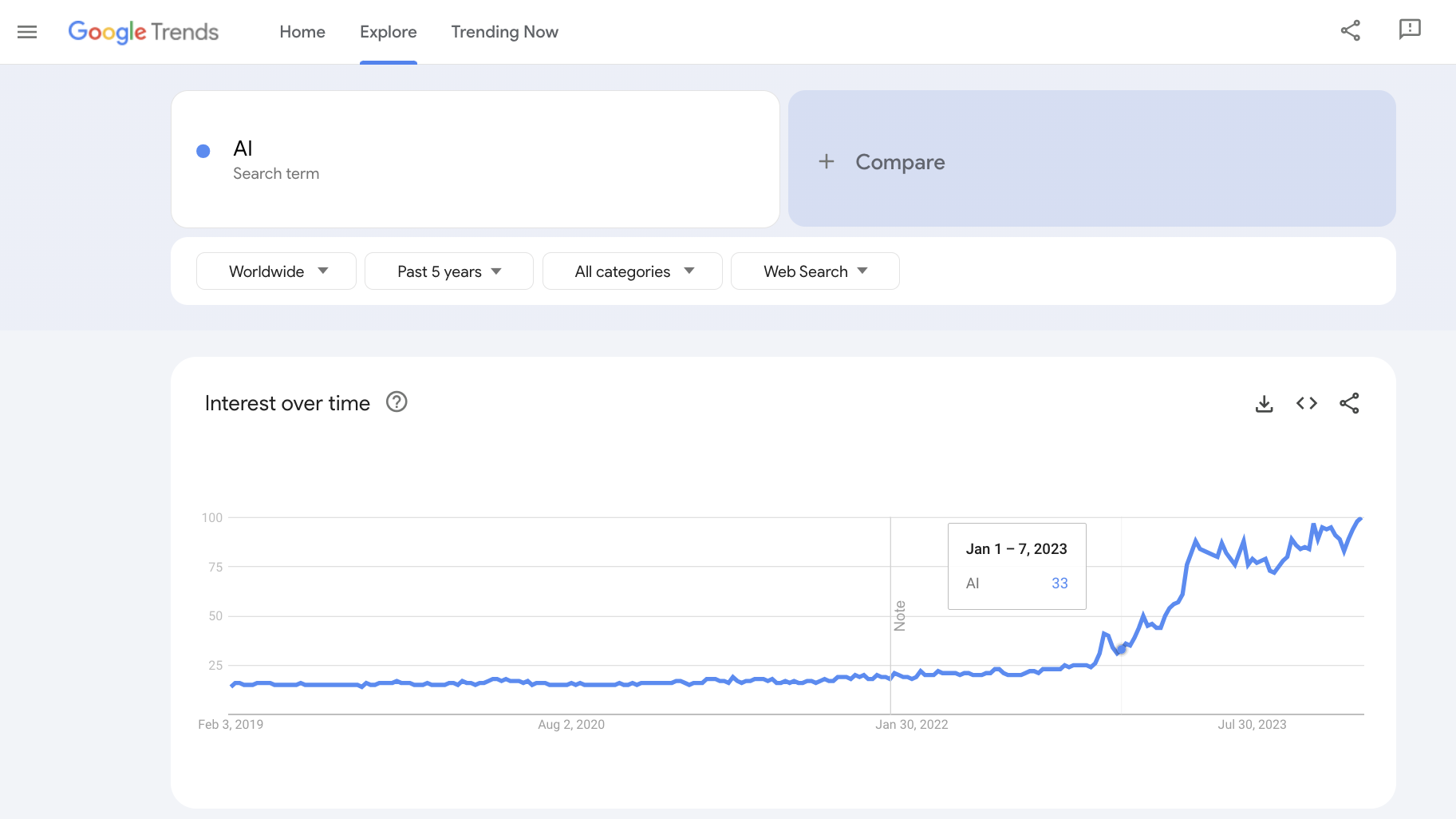 Screenshot from Google Trends, December 2023
Screenshot from Google Trends, December 2023Generative AI features became a part of the user interfaces of top search engines, social media networks, advertising platforms, productivity software, and SEO tools.
While AI has been a part of most platforms for years, generative AI tools – those that use deep learning AI models to generate new outputs based on user inputs (prompts) – exploded.
In 2023:
- According to OpenAI, 80% of Fortune 500 companies adopted ChatGPT.
- According to Microsoft, Bing users completed over 1 billion chats with AI.
With non-stop breaking news about new AI research, large language models (LLMs), stealth AI startups, GPT wrappers, and AI agents, it may take time to determine which solution best suits your objectives.
There may soon be an AI-powered tool that simplifies all the challenges you face in your workday. As an exercise, make a list of your common workflow challenges. That might help connect your thought process as you explore AI tools.
This section offers over 100 of the best AI chatbots, tools, solutions, and training for everyone in SEO – from individual consultants to enterprise marketing teams.
Read: Researchers Discover How To SEO For AI Search
Why AI Matters For SEO
Simply put, AI is or will be in almost everything you and your clients use – especially Google Search, which has utilized machine learning and AI for many years to improve search results.
Now, in February 2024, you’ll find:
- Google is experimenting with AI-powered Circle to Search, Search Generative Experience (SGE), and tools for creativity and productivity in Labs.
- Bing offers AI-powered deep search, chat, summaries, and image creation capabilities via Copilot with GPT-4.
- Baidu has an AI chatbot and cloud development platform similar to Google and Microsoft.
- Naver recently launched a cloud development platform for AI services.
- Brave offers an AI summarizer for search results.
- Wolfram|Alpha offers APIs for LLMs.
- Perplexity strives to modernize PageRank and surpass Google as the leading answer engine.
- Cohere aims to improve search results with rerank technology.
 Screenshot from Cohere, December 2023
Screenshot from Cohere, December 2023In addition, the top advertising, business, marketing, productivity, and SEO platforms are integrating generative AI chat and tools.
Aside from using AI-powered tools for SEO, marketers may consider creating custom AI tools that can be promoted to attract links, increase brand visibility, and generate leads/sales.
Observing how AI chatbots conduct web searches can also provide insight into how search with AI works and how to optimize content for both.
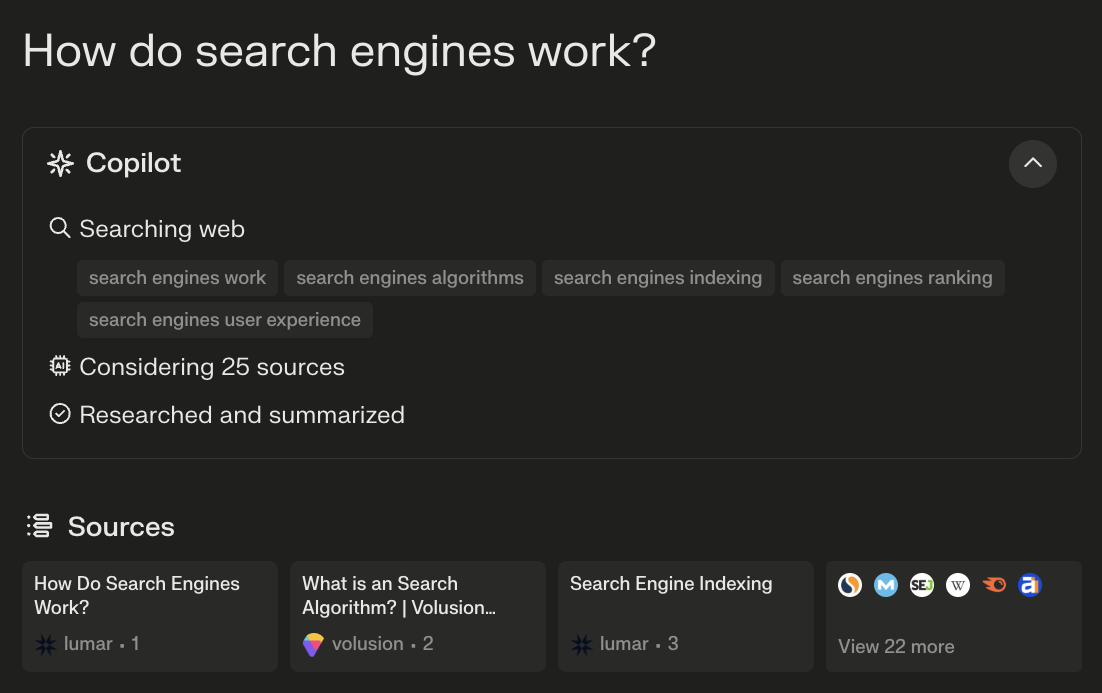 Screenshot from Perplexity, December 2023
Screenshot from Perplexity, December 2023Related: AI For SEO: Can You Work Faster & Smarter?
Important Disclaimers About Using AI
With any AI-powered tool or online service, it’s important to remember not to share confidential or sensitive information.
- Humans may review the information you share for quality assurance purposes.
- Information you share may be included in training data for future models. Some AI platforms allow you to opt out of training data in your user profiles, account settings, developer profiles, AI project settings, chat settings, etc.
- Your company and clients may have strict AI policies that forbid using their data with specific AI features and platforms.
Because AI tools use LLMs trained on information scraped from the internet, AI-generated responses may be inaccurate or contain hallucinations.
- Always fact-check generative AI content.
- Never trust generative AI content for medical, legal, financial, or other high-stakes advice.
- While some companies claim to offer legal protection to select customers while using their tools, the legal questions around publishing AI-generated content are still being discovered, argued, and decided upon. Since there are no definitive answers and interpreting ongoing legal proceedings is inadvisable for non-lawyers, you should avoid publishing the outputs of generative AI.
While never enjoyable, review the terms of service, content use policies, and other usage policies for tools you use, especially if you rely on them for personal or professional tasks.
Also, be aware that companies are making it easier to identify generative AI content. Google likely deems AI-generated content acceptable under certain circumstances as long as it is not intended to manipulate rankings in search results.
However, you should also ask yourself whether AI-generated content meets the standards of users when it comes to quality, accuracy, and helpfulness.
Will your primary audience, customers, partners, and readers feel the same if they discover your articles, item descriptions, product photos, or demo videos are AI-generated?
Some brands have received unwanted scrutiny over the perceived misuse of AI-generated content.
Lastly, there are many pending cases, investigations, lawsuits, and legislation concerning AI-generated content, copyright, disclosure, labeling, privacy, and training data.
The outcomes may affect how AI tools work, how much they cost, and what it takes to develop them safely. It may also make you revisit any AI-generated content you’ve previously published to ensure it is safe to use – personally and professionally.
Prompting
There are three reasons you should explore the art of prompting.
1. Detailed prompts can get you closer to the response you want from generative AI tools.
If you hired a web developer, you wouldn’t tell them to make you a website.
You would tell them about your business, products, customer demographics, and the functionality you want (blog, ecommerce store, chatbot, knowledge base, etc.) so they could build a unique website for your company.
The same goes for generative AI tools. Be specific.
2. Understanding prompts can help you optimize your content for the future of AI in search.
The following is an example of a prompt offered to users of Perplexity in its FAQ to help find specific information.
In it, Perplexity suggests that the user be specific about the information they need.
 Screenshot from Perplexity, December 2023
Screenshot from Perplexity, December 2023When the user enters the suggested prompt into Perplexity, they may be asked a question to narrow down the results, such as the vehicle size or price range.
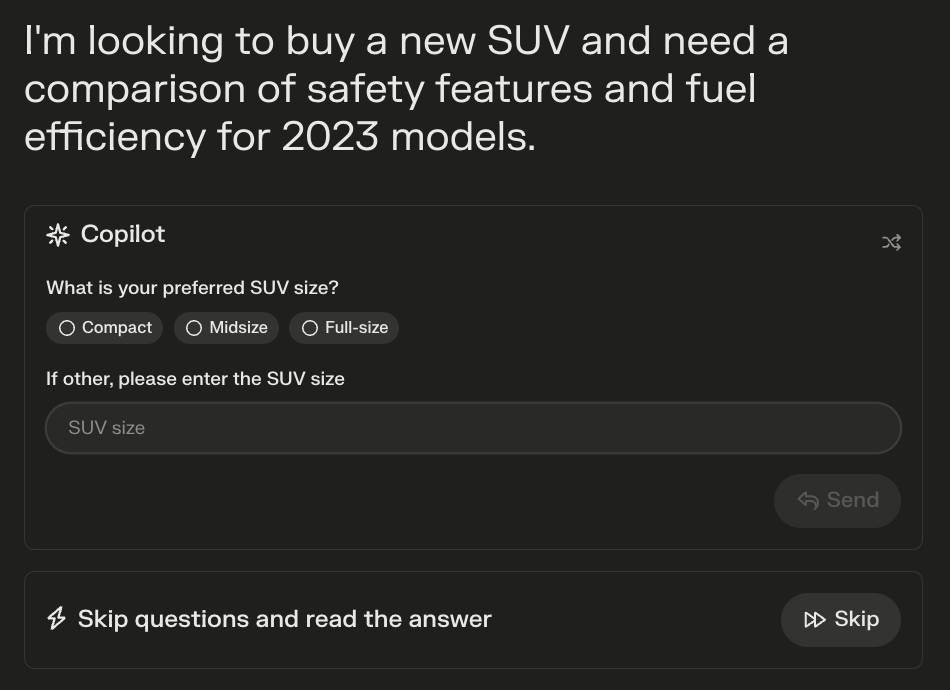 Screenshot from Perplexity, December 2023
Screenshot from Perplexity, December 2023Then, Perplexity offers a summary of the sources with information about safety features and fuel efficiency for 2023 SUVs.
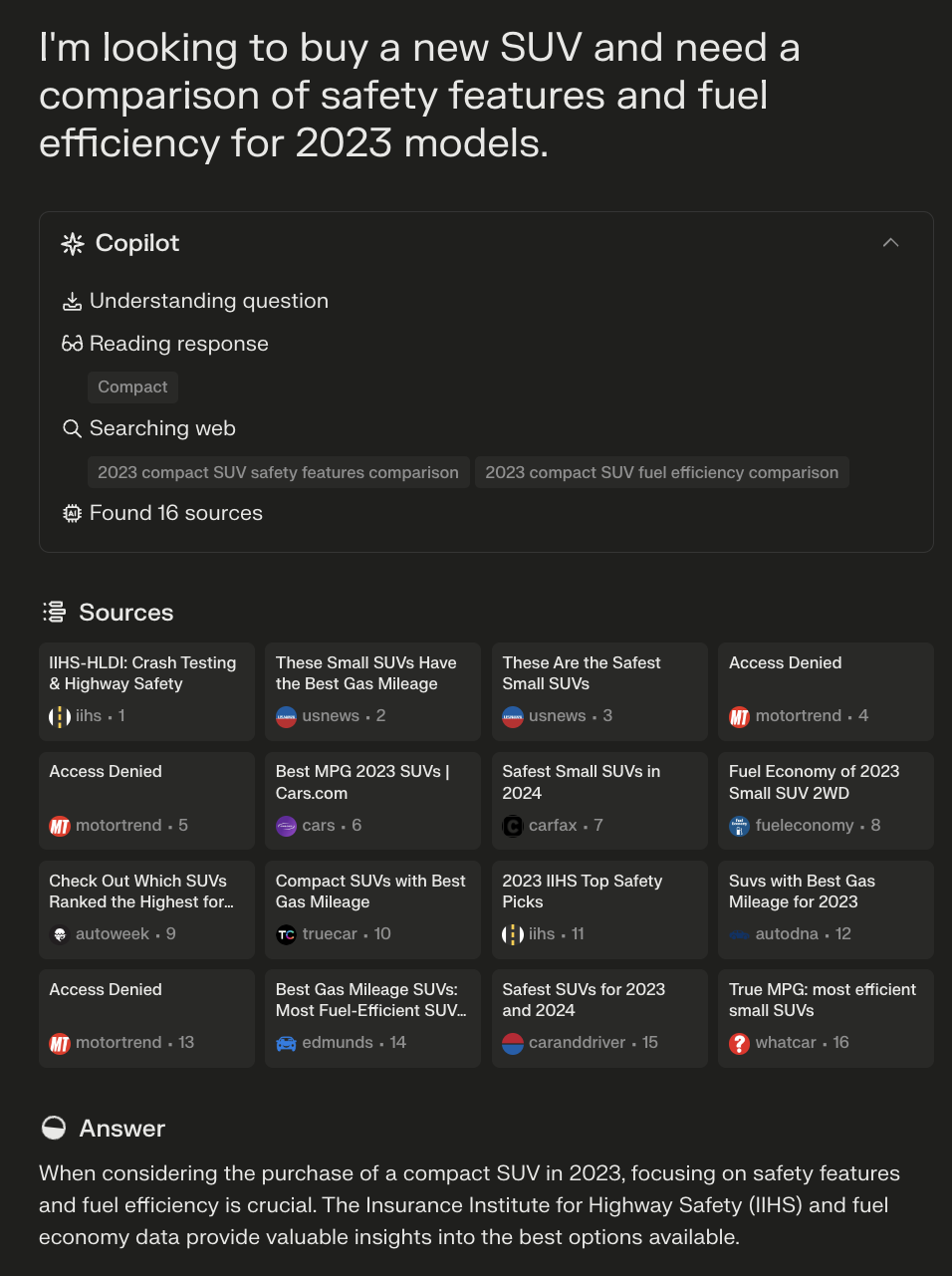 Screenshot from Perplexity, December 2023
Screenshot from Perplexity, December 2023Publishers could use the results of AI-powered answer engines like Perplexity to reverse engineer why AI chose each source for the query.
 Screenshot from U.S. News, December 2023
Screenshot from U.S. News, December 2023As tech companies teach users to create prompts that combine context with a specific goal, brands must get to know the prompts used in AI answer engines, like the top keywords used in search engines.
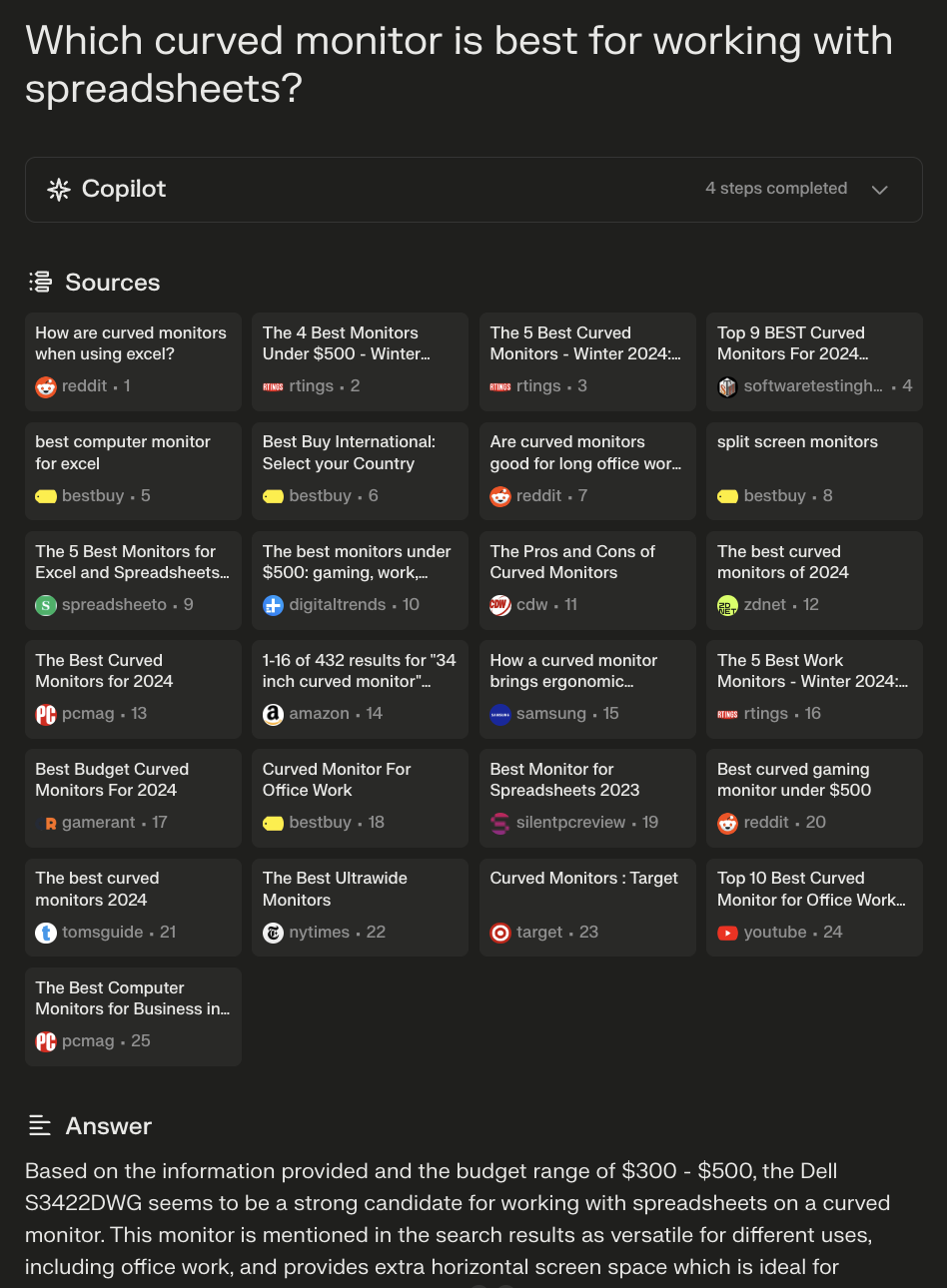 Screenshot from Perplexity, December 2023
Screenshot from Perplexity, December 2023In the above example of a prompt specifying a computer monitor that works best with spreadsheets, several results are from popular retailers.
Ecommerce store owners could use these examples to better optimize product and category pages for a chance to get in front of a customer with a specific purchasing intent.
3. Knowing the sources used for AI-generated answers will allow brands to determine the top publications products must be featured on to reach AI chat users.
Using the right prompts, brands can pinpoint the publications featured most often as sources by AI chatbots for their target customers.
It may also give brands an idea of how they would want to be featured in AI answers for ad campaigns.
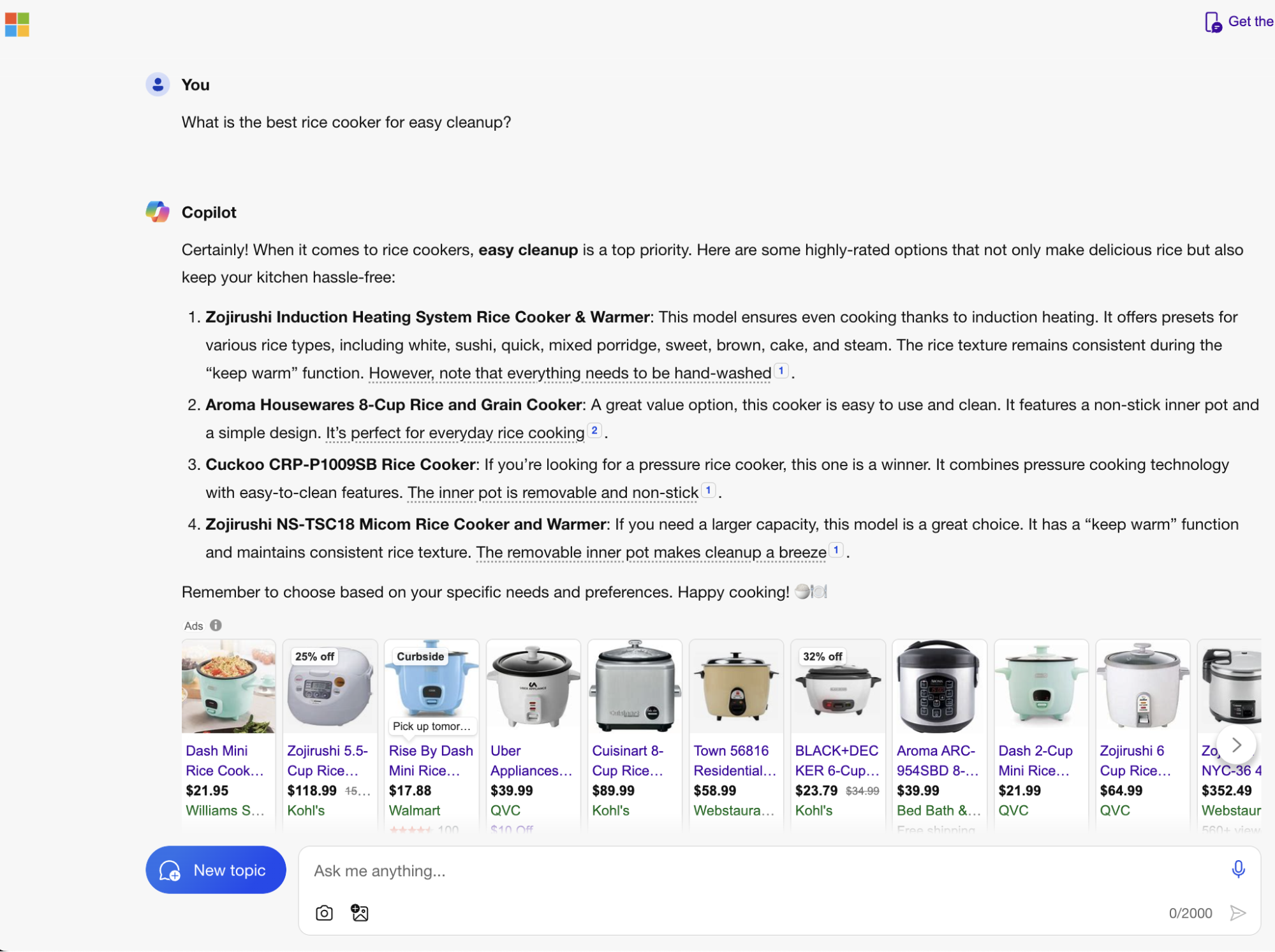 Screenshot from Copilot, December 2023
Screenshot from Copilot, December 2023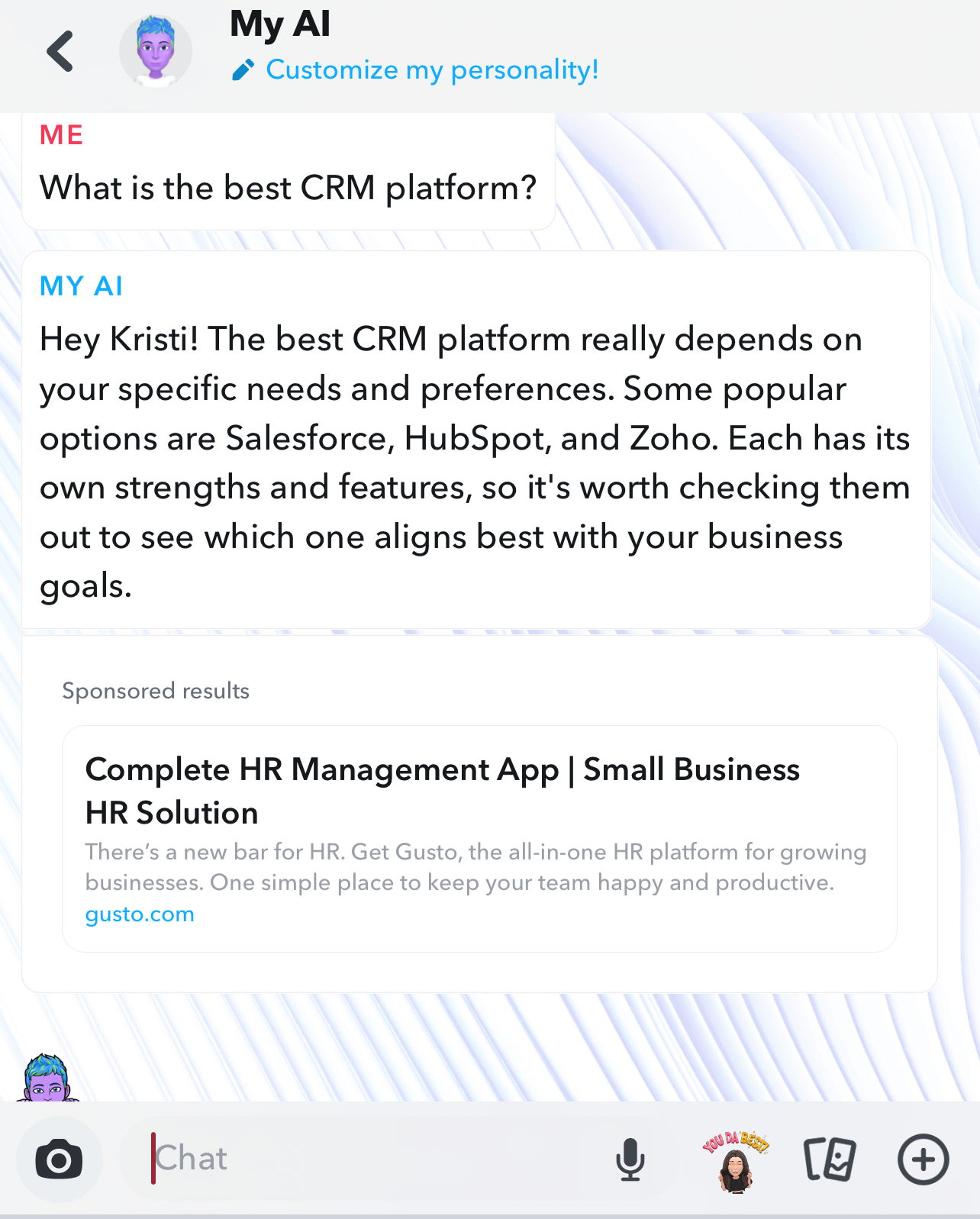 Screenshot from My AI, December 2023
Screenshot from My AI, December 20234. Prompting is essential for using platforms with generative AI features.
Soon, search engines may not be the primary way people discover content, research purchases, and find places to shop.
Users may ask ChatGPT, Copilot, Gemini, Meta AI, or another AI chatbot. That’s what Google’s CEO reportedly anticipates.
Notably, many of the top tech platforms offer guides to prompting for users and developers alike.
- What Is Prompt Engineering? (Amazon).
- Prompt Engineering For Generative AI (Google).
- Prompt Engineering With Llama 2 (Meta).
- Learn About Copilot Prompts (Microsoft).
- Six Prompt Engineering Strategies For Better Results (OpenAI).
- Prompting Tips and Examples (Perplexity).
- Best Prompting Tips For Text & Image Generation Bots (Poe).
See also: List Of 16 GPT SEO AI Tools Publicly Available Right Now
The Top AI Chatbots
AI chatbots have come a long way since OpenAI released the ChatGPT “research preview” in November 2022.
Many can now help you with analysis, content creation, coding, documents, images, research, summarization, and other complex tasks.
Some are free.
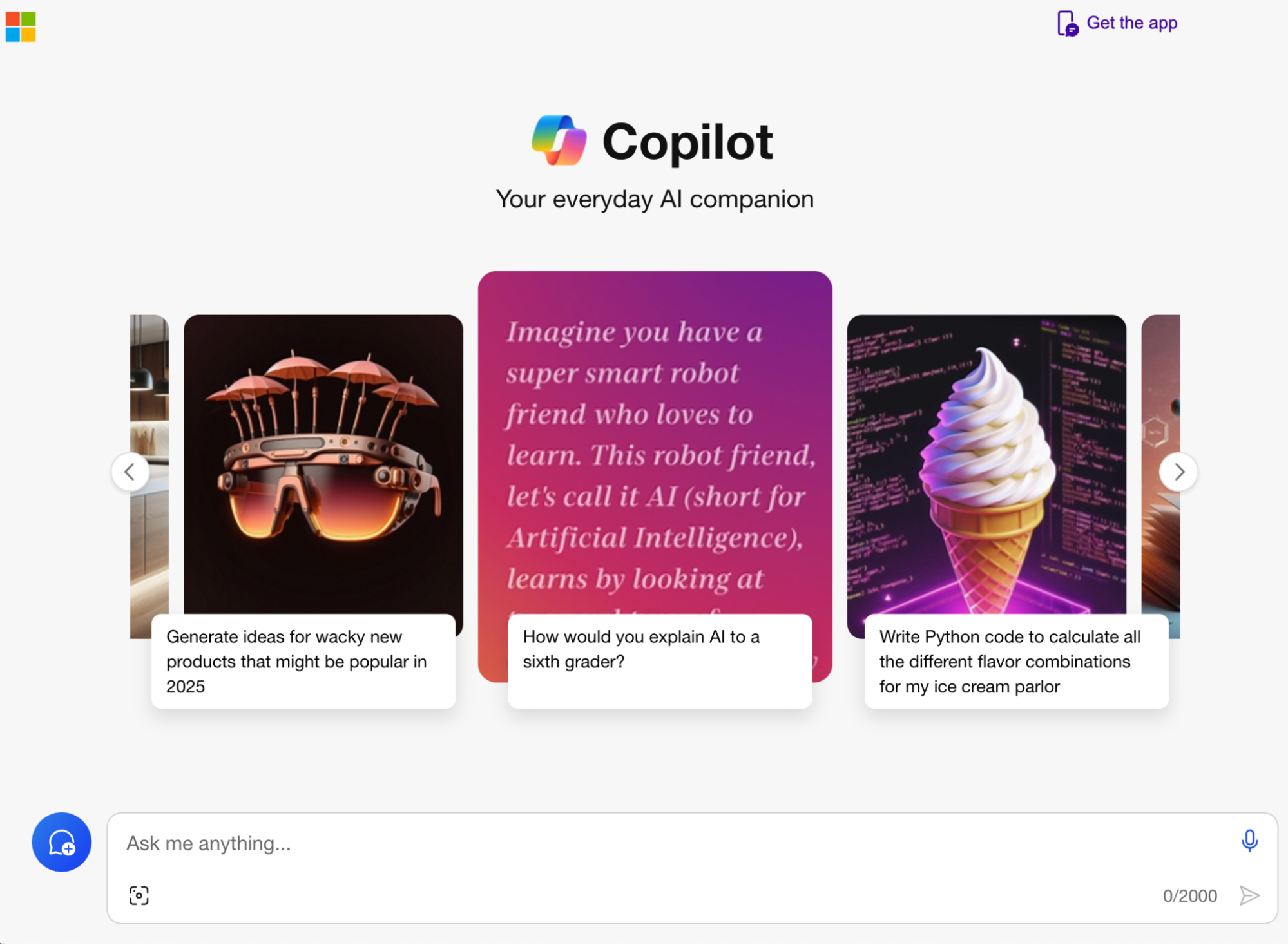 Screenshot from Copilot, December 2023
Screenshot from Copilot, December 2023While others have free and paid options.
ChatGPT, Claude, Gemini (formerly Bard), Perplexity, and Poe offer free plans and premium subscriptions starting at $20 monthly.
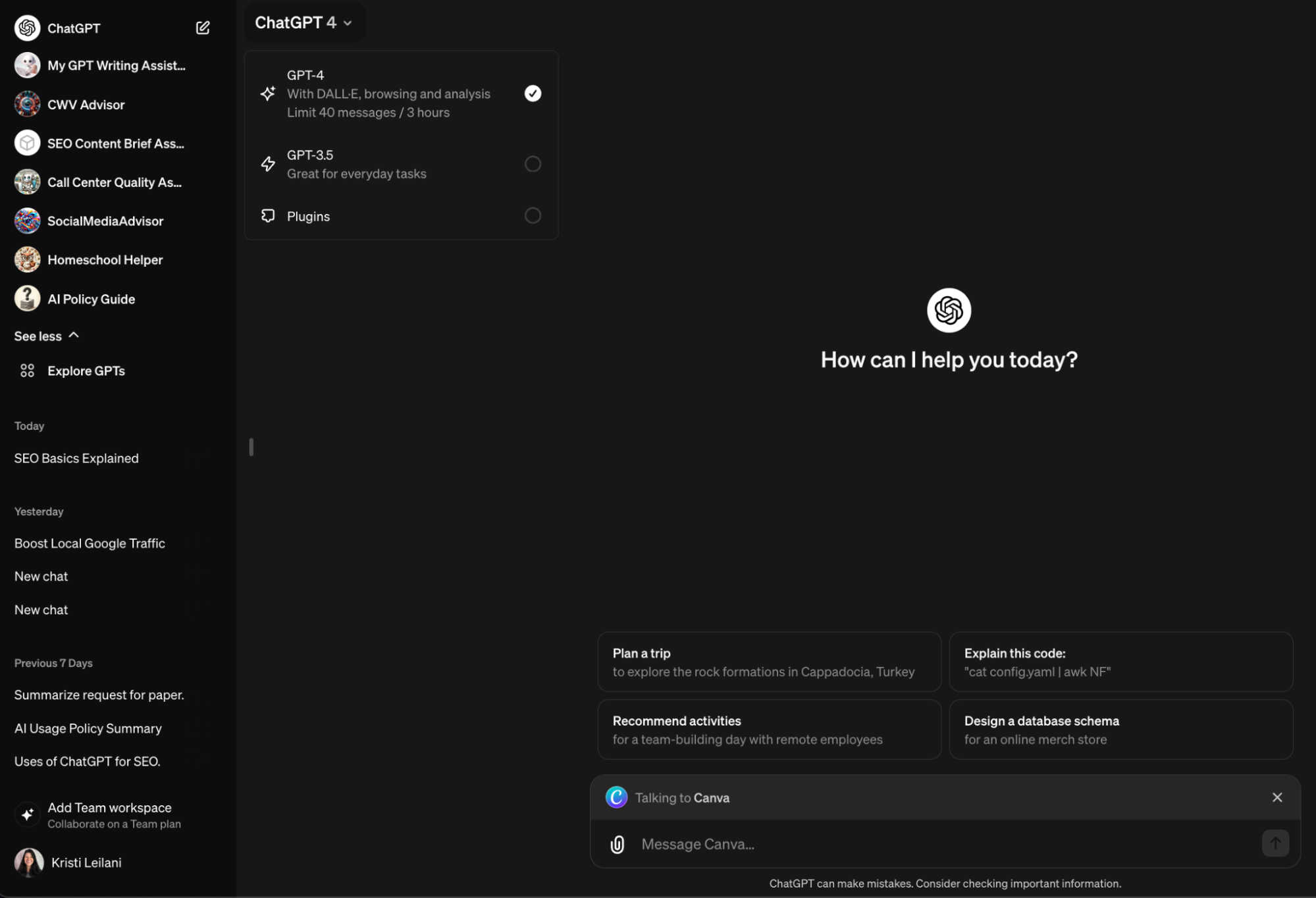 Screenshot from ChatGPT, December 2023
Screenshot from ChatGPT, December 2023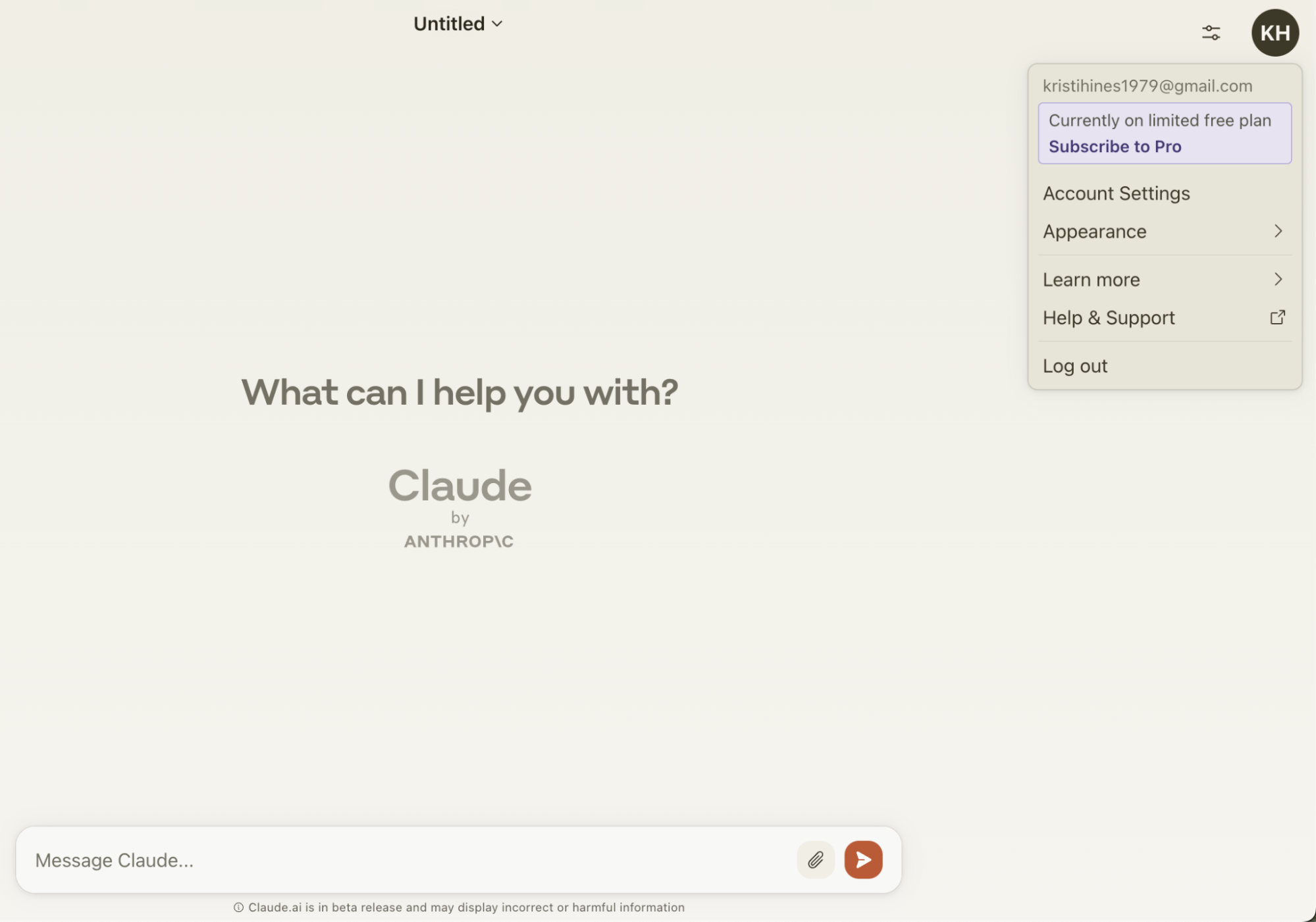 Screenshot from Claude, December 2023
Screenshot from Claude, December 2023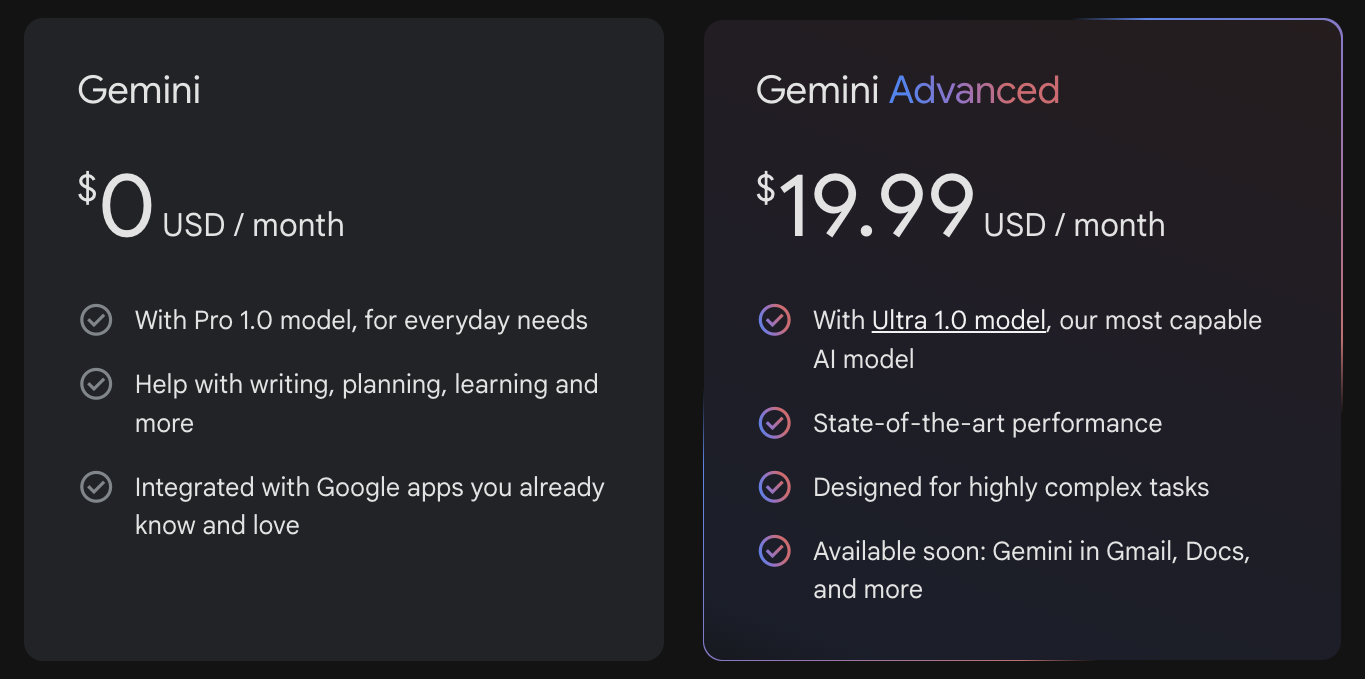 Screenshot from Gemini (formerly Bard), January 2024
Screenshot from Gemini (formerly Bard), January 2024- ChatGPT gives subscribers access to GPT-4, DALL·E, file uploads, beta features, web browsing with Bing, over 1,000 third-party plugins, the ability to create custom chatbots (GPTs), and a store full of custom GPTs.
- Claude by Anthropic offers a larger context window than most, making it better for tasks like summarizing large chunks of text and analyzing uploaded documents. Subscribers get access to the latest model and beta features.
- Google Gemini Advanced utilizes Ultra 1.0 to connect to Google Docs, Google Drive, Gmail, YouTube, Flights, hotels, and Maps.
- Microsoft Copilot (GPT-4) uses the web and plugins from Instacart, Kayak, Klarna, and Shop.
- Perplexity provides answers to questions with deep search and sources. Open-source models from Meta and Mistral AI are available in Labs. Subscribers can switch between GPT-4, Claude, Gemini Pro, and online LLMs.
- Pi (Inflection-1) is a more emotionally intelligent and personalized chat.
- Poe hosts dozens of official chatbots powered by the latest models from Anthropic, Google, Meta, Mistral AI, OpenAI, and Stability AI. It also allows you to create custom chatbots on many of those platforms. Subscribers get more access to the latest models.
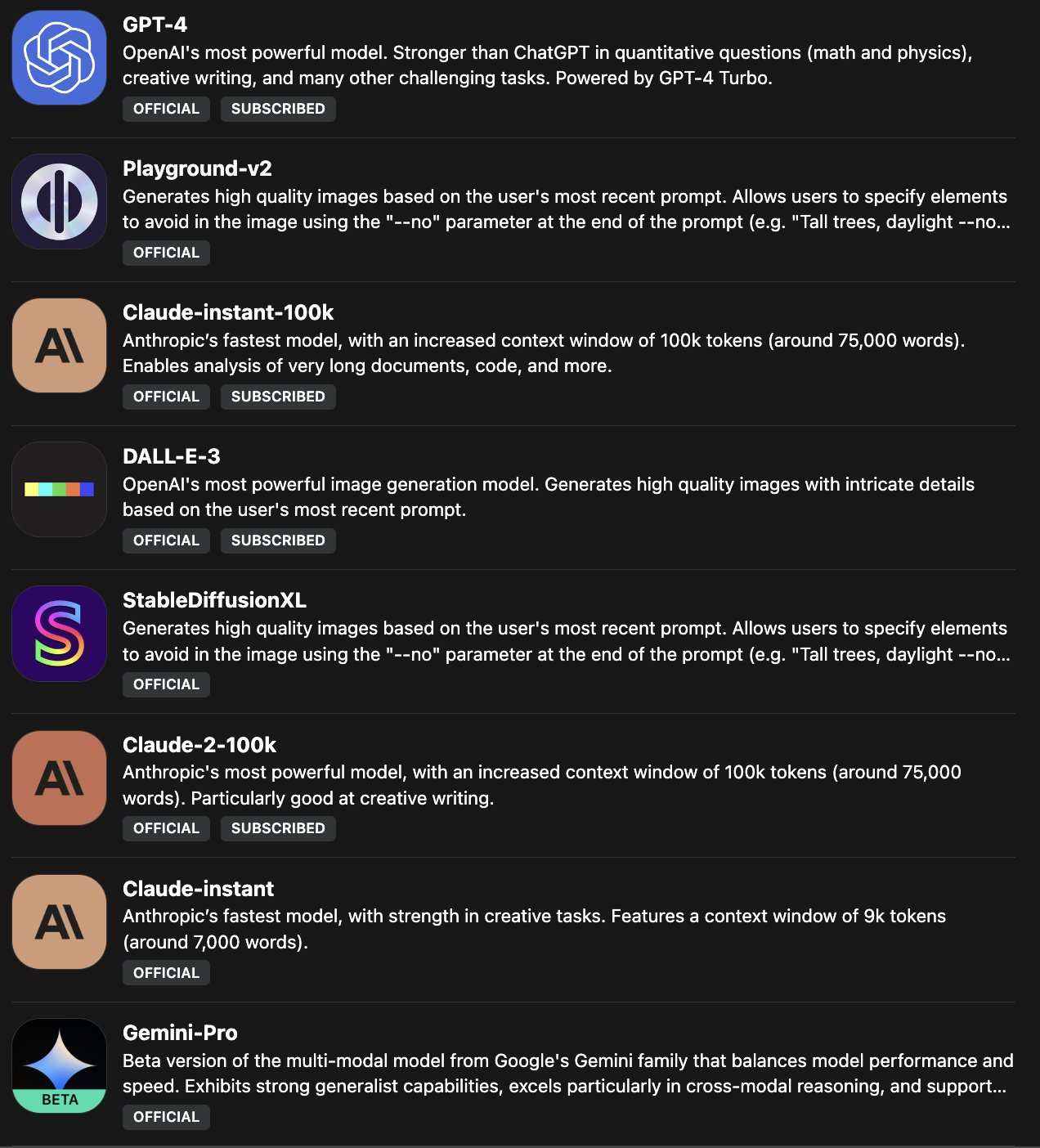 Screenshot from Poe, December 2023
Screenshot from Poe, December 2023Generative AI & AI Chatbots On Social Media
While Gemini may have access to YouTube content, other social networks built AI chatbots into the platforms.
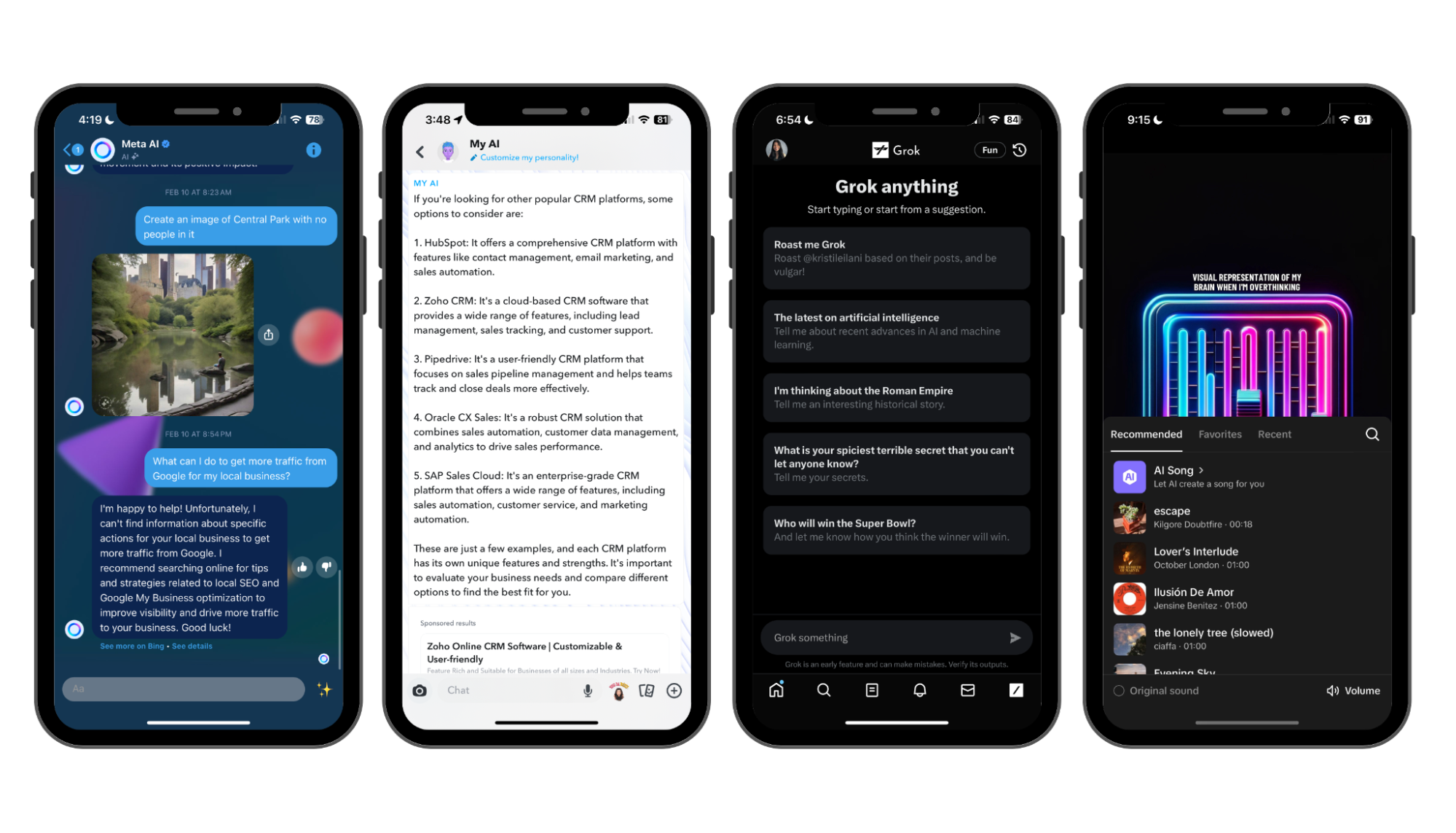 Image from author, December 2023
Image from author, December 2023- Meta launched a Meta AI chatbot to generate images and search the web with Bing on Messenger, Instagram, and WhatsApp.
- Quora integrates the ChatGPT bot from its AI platform, Poe, into some answers.
- Snapchat’s My AI was one of the first AI chatbots that users could direct messages and integrate into group chats.
- TikTok recently tested an AI song generator.
- X, formerly known as Twitter, launched Grok for Premium+ subscribers, which has access to X posts/tweets as “sources” for responses.
Bytedance was also working on an AI model, but the parent company of TikTok allegedly did it in a way that violated OpenAI and Microsoft TOS. This hasn’t appeared to delay the platform’s AI plans, but it may affect the future availability of the CapCut plugin for ChatGPT.
While not a social media platform, you can chat with Pi via Inflection on Messenger, Instagram, and WhatsApp.
AI Chatbots With Context
As you use AI chatbots more frequently, you may repeat specific details to get better responses.
Some platforms allow you to add essential context about yourself, your work, and what you are trying to accomplish so that AI provides the best response for your needs.
- ChatGPT lets users provide context and specific directions with Custom Instructions.
- Perplexity lets users offer context, instructions, location, and language preferences in the AI Profile.
Custom Chatbots With Minimal Coding
You can create custom chatbots in under ten minutes when you need an AI chatbot tailored to your needs.
ChatGPT allows subscribers to build GPTs – chatbots that use GPT-4 with web browsing, DALL·E, and code analysis with custom instructions, knowledge files, and actions to complete specific tasks.
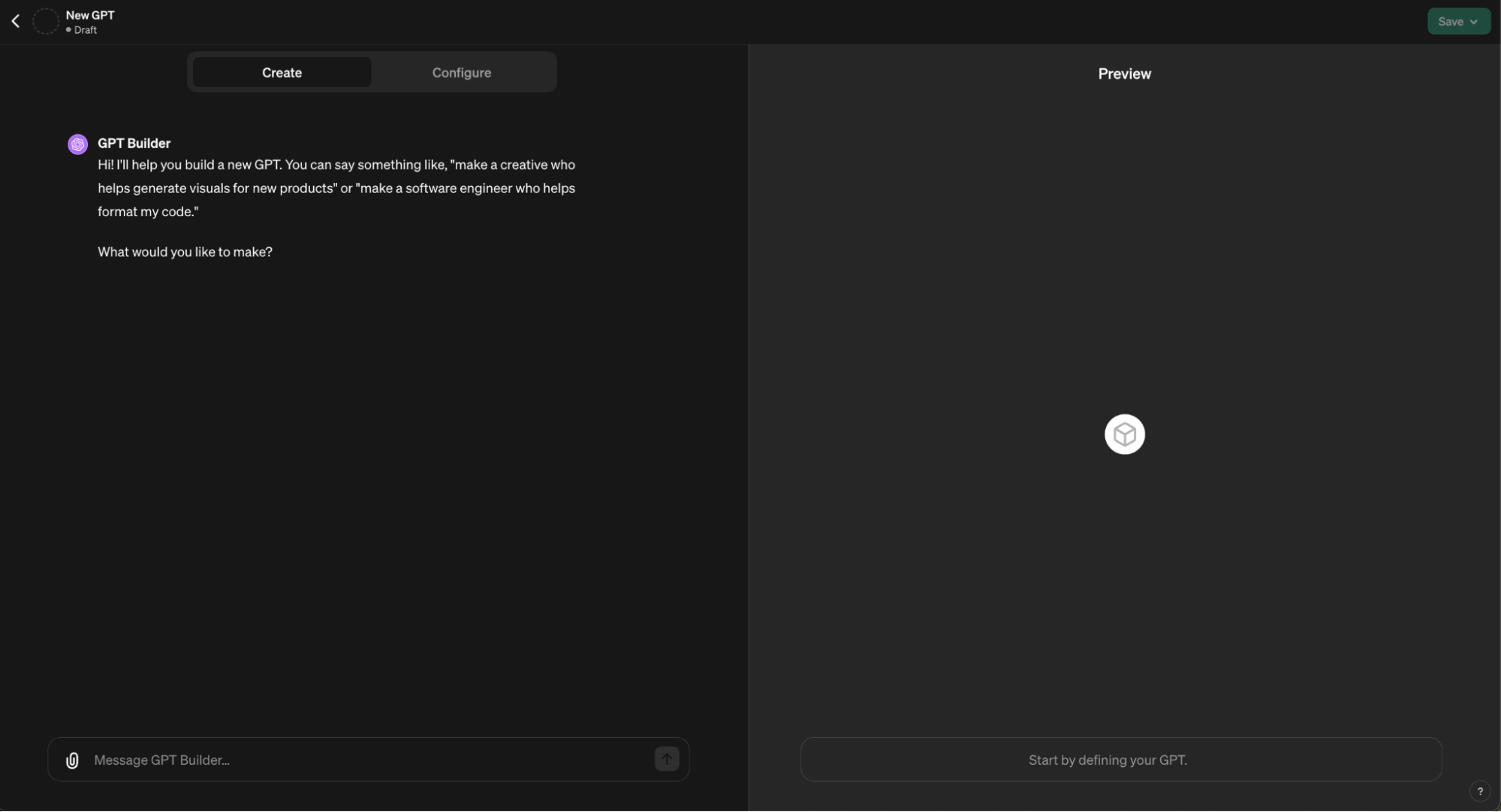 Screenshot from ChatGPT, December 2023
Screenshot from ChatGPT, December 2023Microsoft Copilot Studio allows 365 users to create custom Copilot experiences using your company’s data.
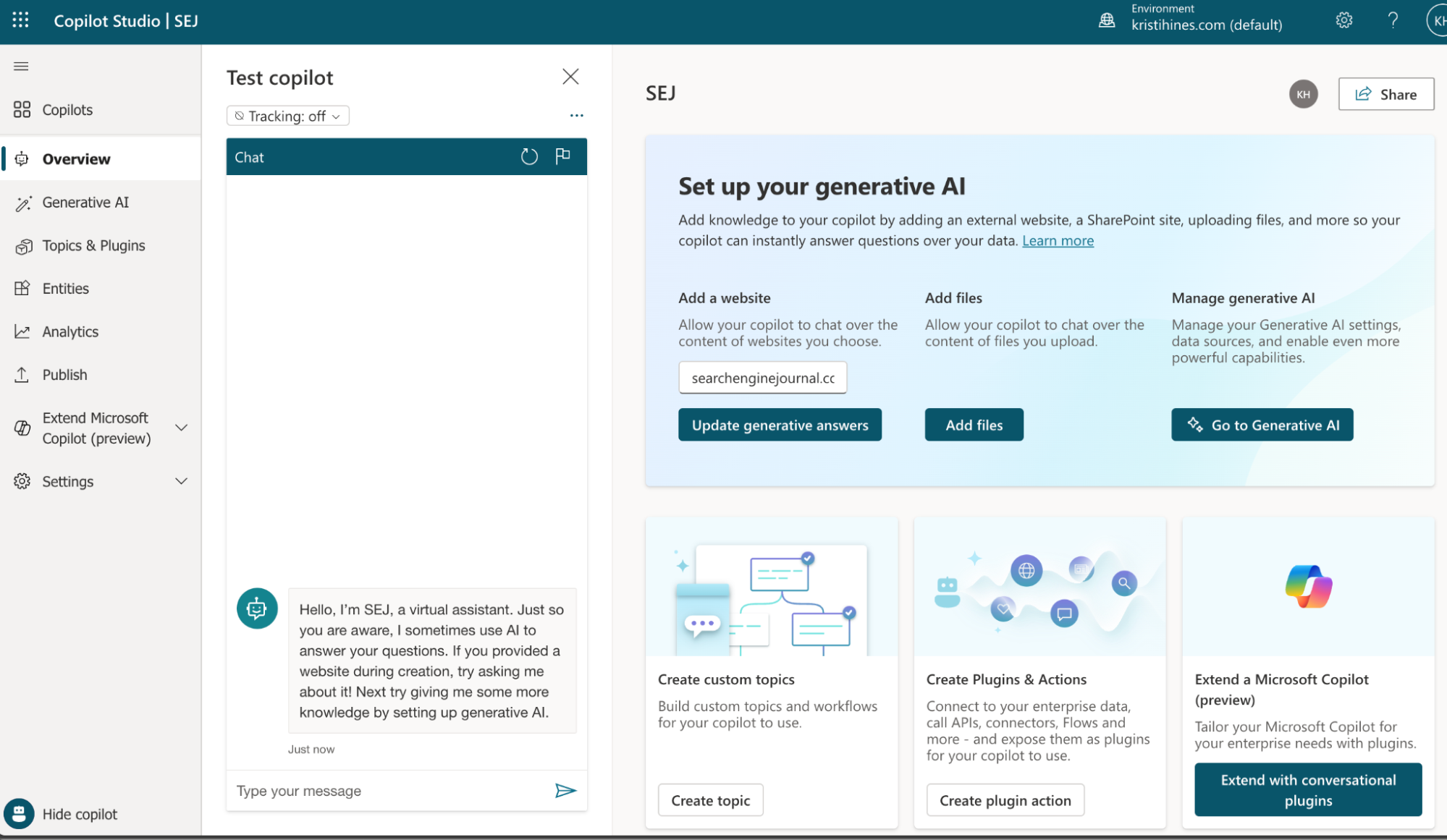 Screenshot from Copilot, December 2023
Screenshot from Copilot, December 2023Poe users create custom chatbots using eight of the most popular AI models. You can give each chatbot specific instructions for each conversation and knowledge files to reference.
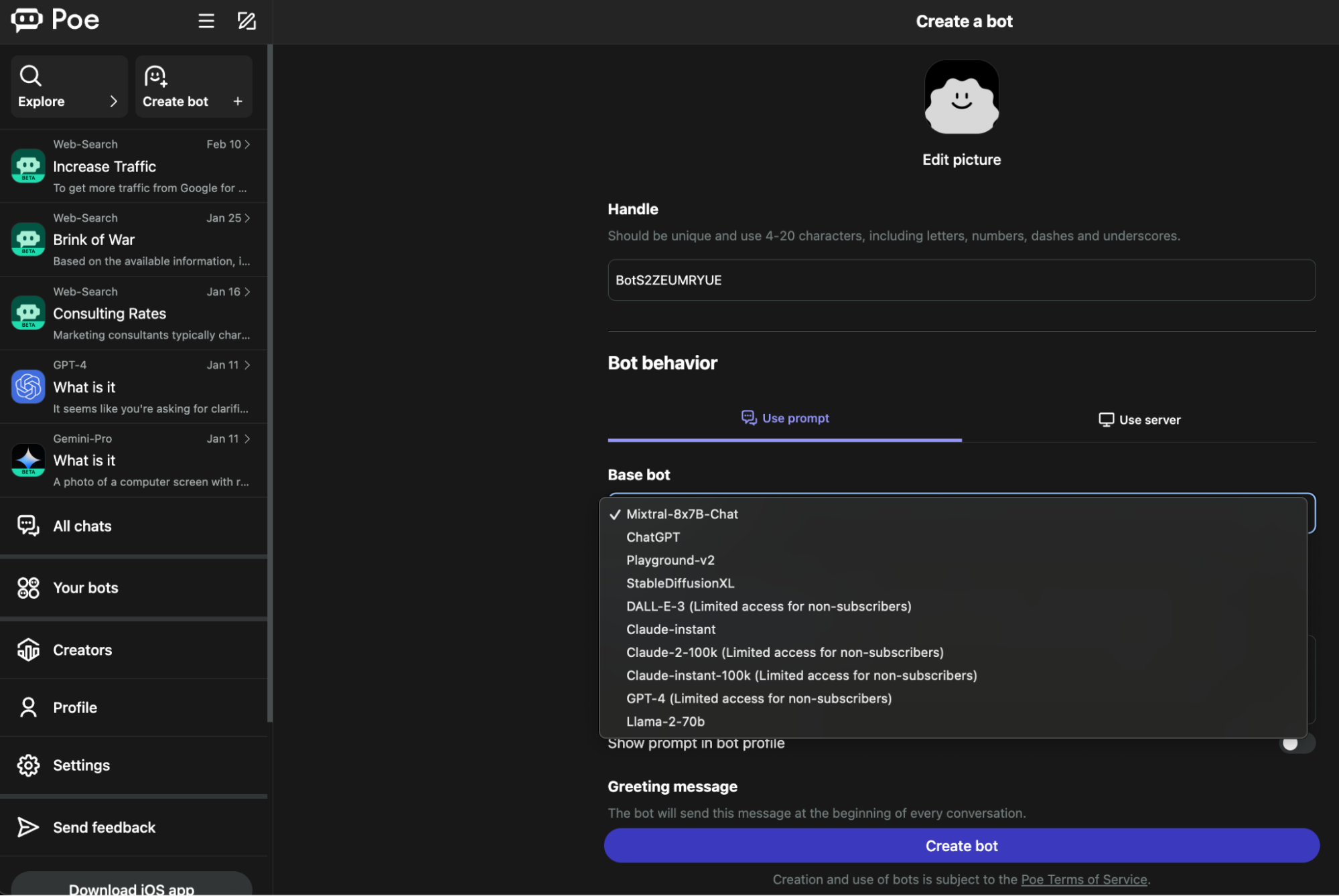 Screenshot from Poe, December 2023
Screenshot from Poe, December 2023SEO Benefits Of Creating Custom AI Chatbots And GPTs
According to Semrush, GPTs receive organic search traffic from Google.
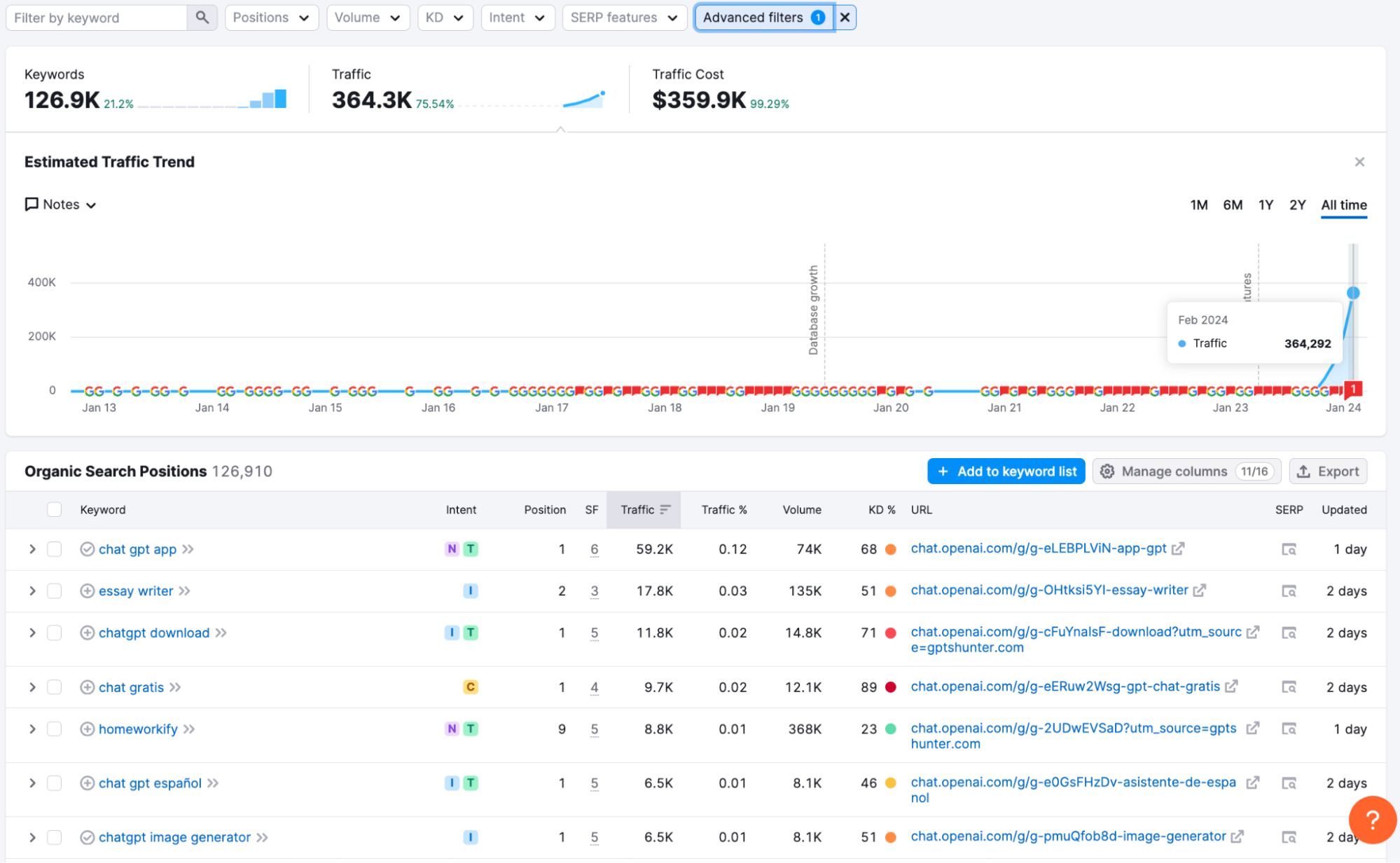 Screenshot from Semrush, December 2023
Screenshot from Semrush, December 2023Making a free tool or inexpensive solution for you or your clients that can be promoted on a webpage could lead to links, brand visibility, and a new tool for lead generation and sales.
It’s beneficial since OpenAI allows GPT builders to place a website link on the GPT page.
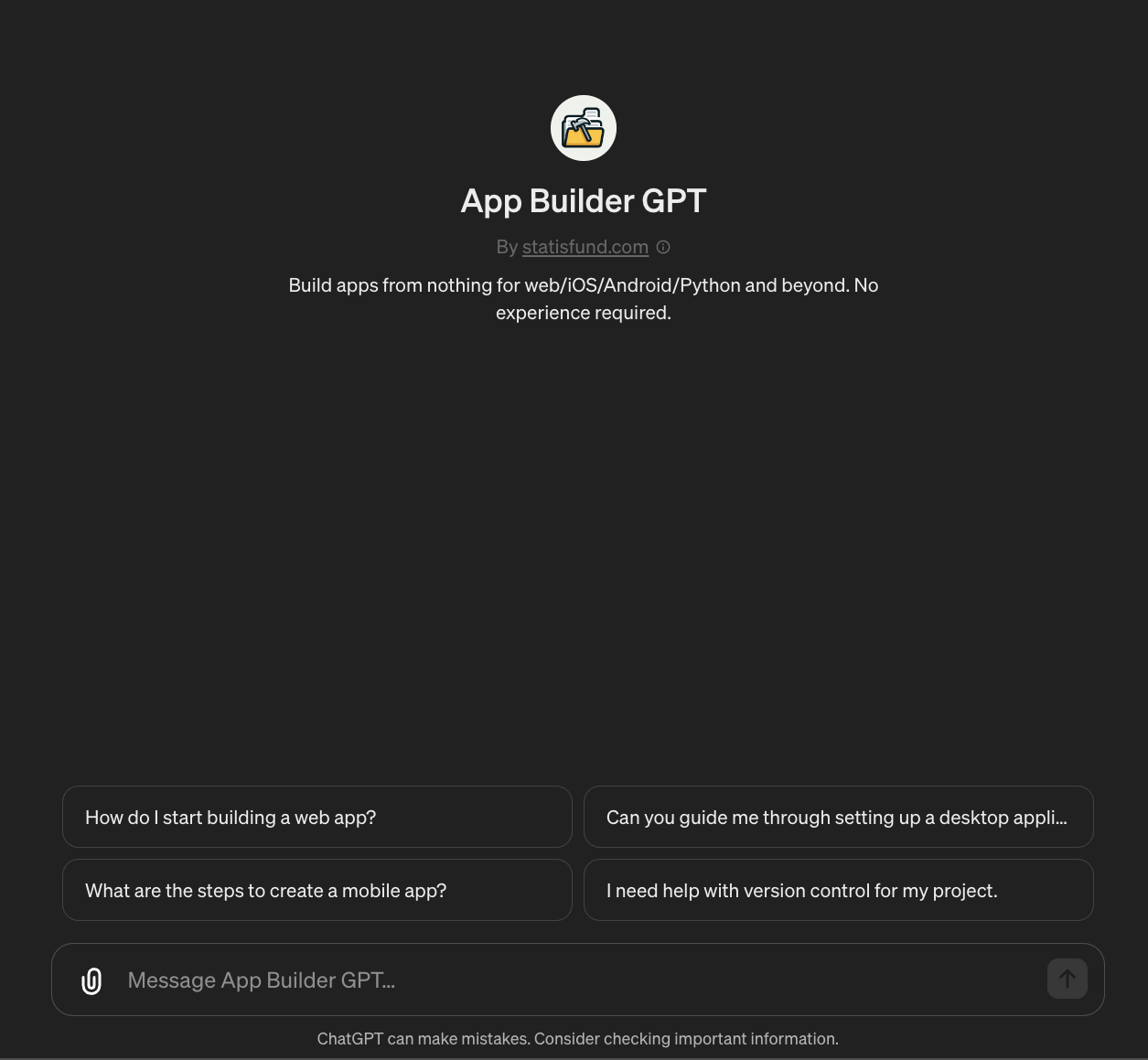 Screenshot from ChatGPT, December 2023
Screenshot from ChatGPT, December 2023You could also create a new product/income stream for your business or for your clients.
Be aware of the disclaimers for using AI, as mentioned at the beginning of this section. It’s essential also to research the risks of developing custom generative AI features for others.
Learn How To Build Custom AI Chatbots
Learn how to build custom chatbots and GPTs with these free courses and guides:
- ChatGPT Prompt Engineering for Developers (DeepLearning.AI).
- Quickstart Guide to Building Generative AI Copilots (Microsoft).
- How to Create a Custom Bot (Poe).
Built-In AI Chatbots And Features
You don’t always have to find a new tool to get AI assistance. Many popular business tools, software, and online services have built-in AI chatbots, features, integrations, and plugins.
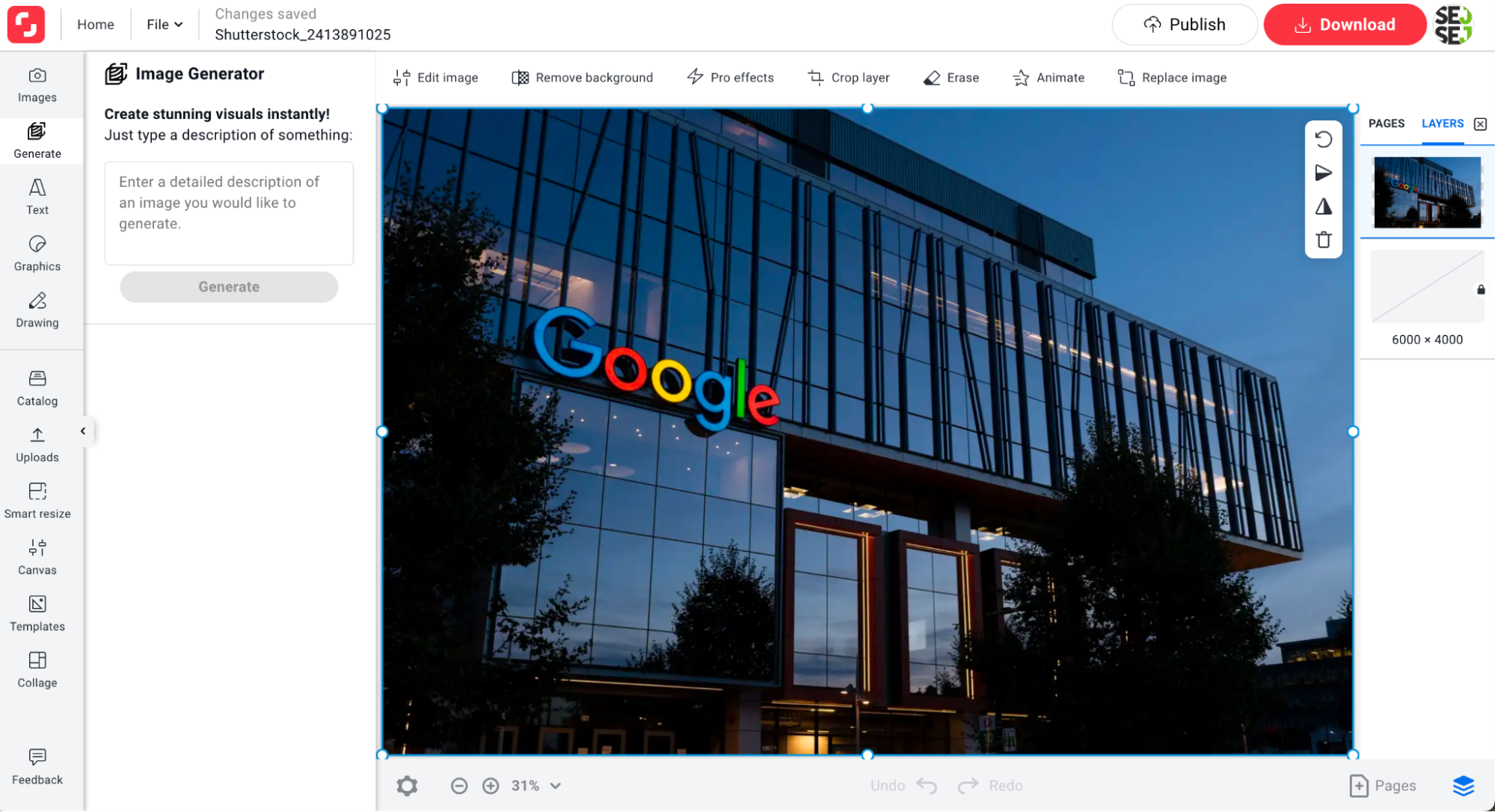 Screenshot from Shutterstock, December 2023
Screenshot from Shutterstock, December 2023In addition to having an AI tool with direct access to your company’s data, you have the confidence that comes with a platform you already use.
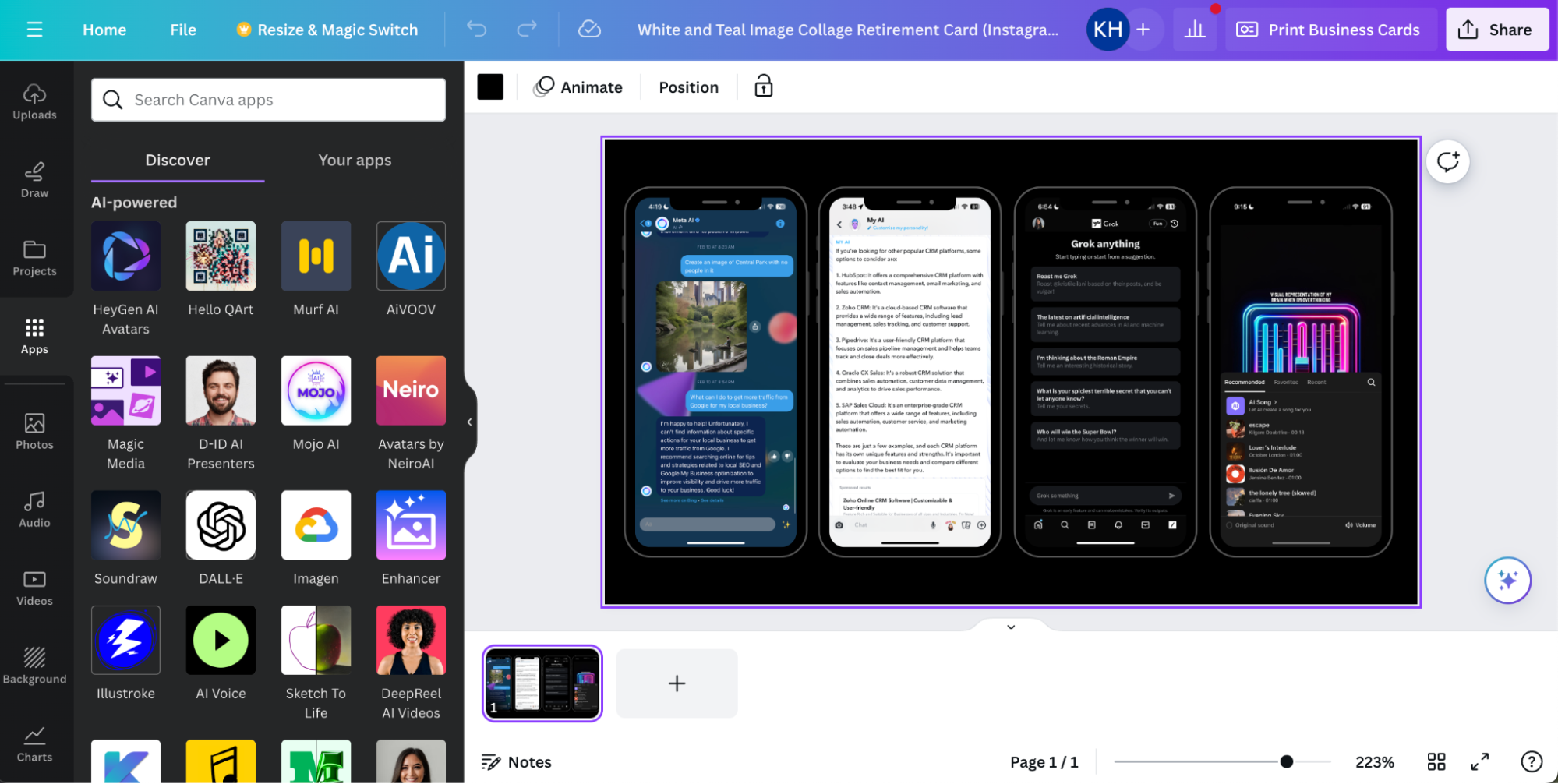 Screenshot from Canva, December 2023
Screenshot from Canva, December 2023The following are examples of platforms with scalable AI features for advertisers, marketers, agencies, teams, and enterprises.
- Accounting: Intuit.
- Advertising: Amazon Ads, Google Ads, LinkedIn Ads, Meta Ads, Microsoft Ads, Bing Ads, Yahoo Ads.
- Analytics: Mixpanel, SimilarWeb.
- Business Intelligence: Amazon Quicksight, SAP.
- Coding: AWS, GitHub, StackOverflow.
- Communication: Slack.
- Customer Relationship Management & Marketing: HubSpot, Salesforce.
- Customer Service: Amazon Connect, CallRail, Intercom, LivePerson, ServiceNow, Vertex Contact Center, Zendesk.
- Ecommerce: Amazon, Shopify.
- Email Marketing: ActiveCampaign, Constant Contact, Mailchimp, Omnisend.
- File Management: Dropbox.
- Graphic Design: Adobe, Canva.
- Hiring: LinkedIn.
- Legal: Thomson Reuters.
- Meetings: Zoom.
- Manufacturing: AWS Supply Chain.
- Productivity: AWS, Google Workspace, Microsoft Copilot 365, Smartsheet, Zoho.
- Project Management: Airtable, Asana, Atlassian, Monday, Wrike.
- SEO: Ahrefs, Conductor, Semrush, SERanking, Surfer, Ubersuggest.
- Social Media Marketing: Agorapulse, Buffer, HootSuite, Sprout Social.
- SMS Marketing: Klaviyo.
- Stock Photography: Getty Images, Shutterstock.
- Video: Loom, Webex.
- Website Building: Wix, WordPress.
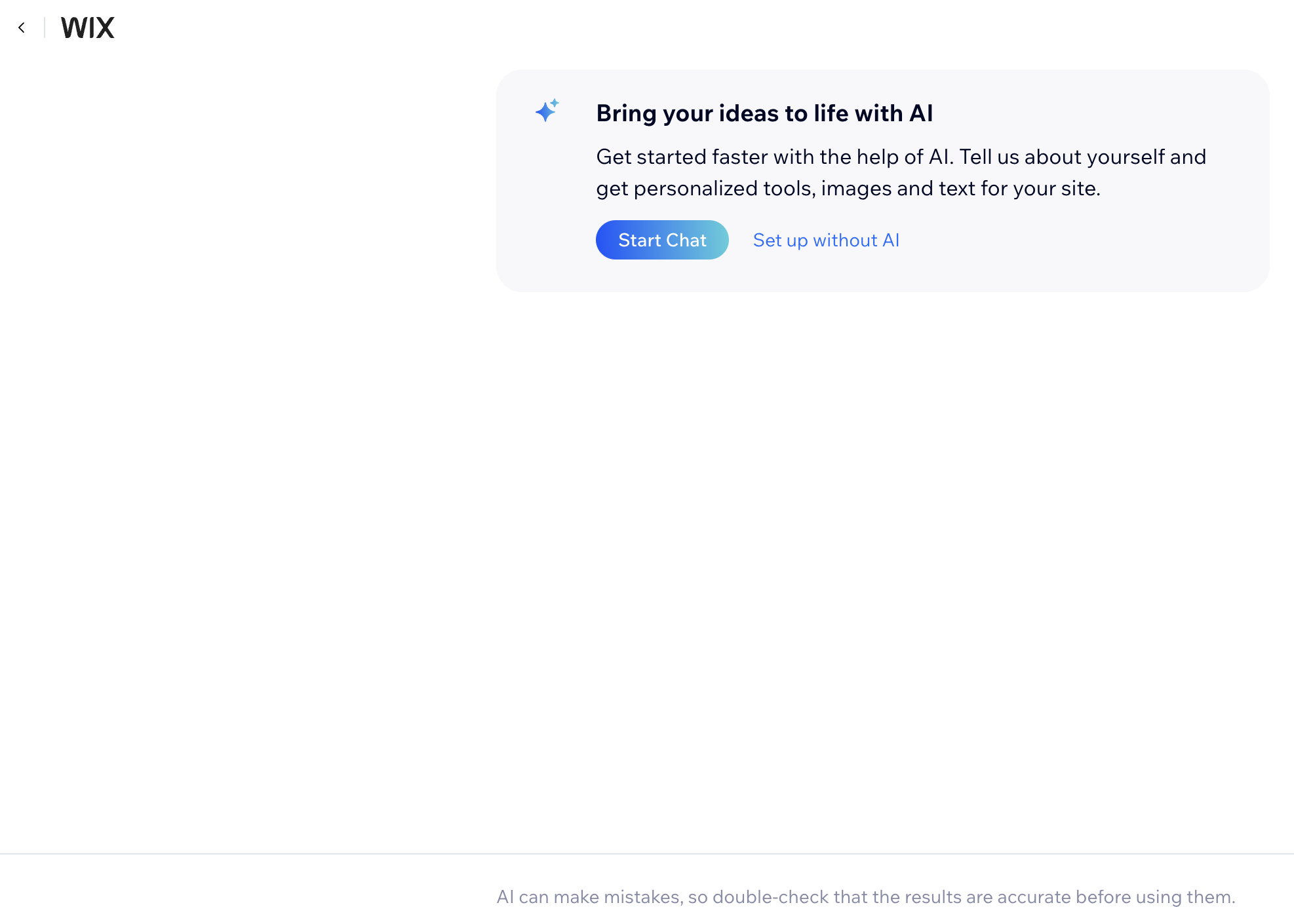 Screenshot from Wix, December 2023
Screenshot from Wix, December 2023Learn About Generative AI In Business
Learn how to utilize generative AI in business with the following free courses:
- Introduction to AI for Business Users (Microsoft).
- Introduction to Generative AI Learning Path (Google).
- Generative AI for Executives (Amazon).
Automated AI Agents
Do you want to automate tasks with AI?
With Zapier (and plans starting at $20 a month), you can connect your ChatGPT account, Claude (via API), or Cohere (via API) to thousands of popular business applications to create automated workflows.
For example, I can create a workflow that connects Gmail, ChatGPT, and Slack and works when a new email matching a search is received.
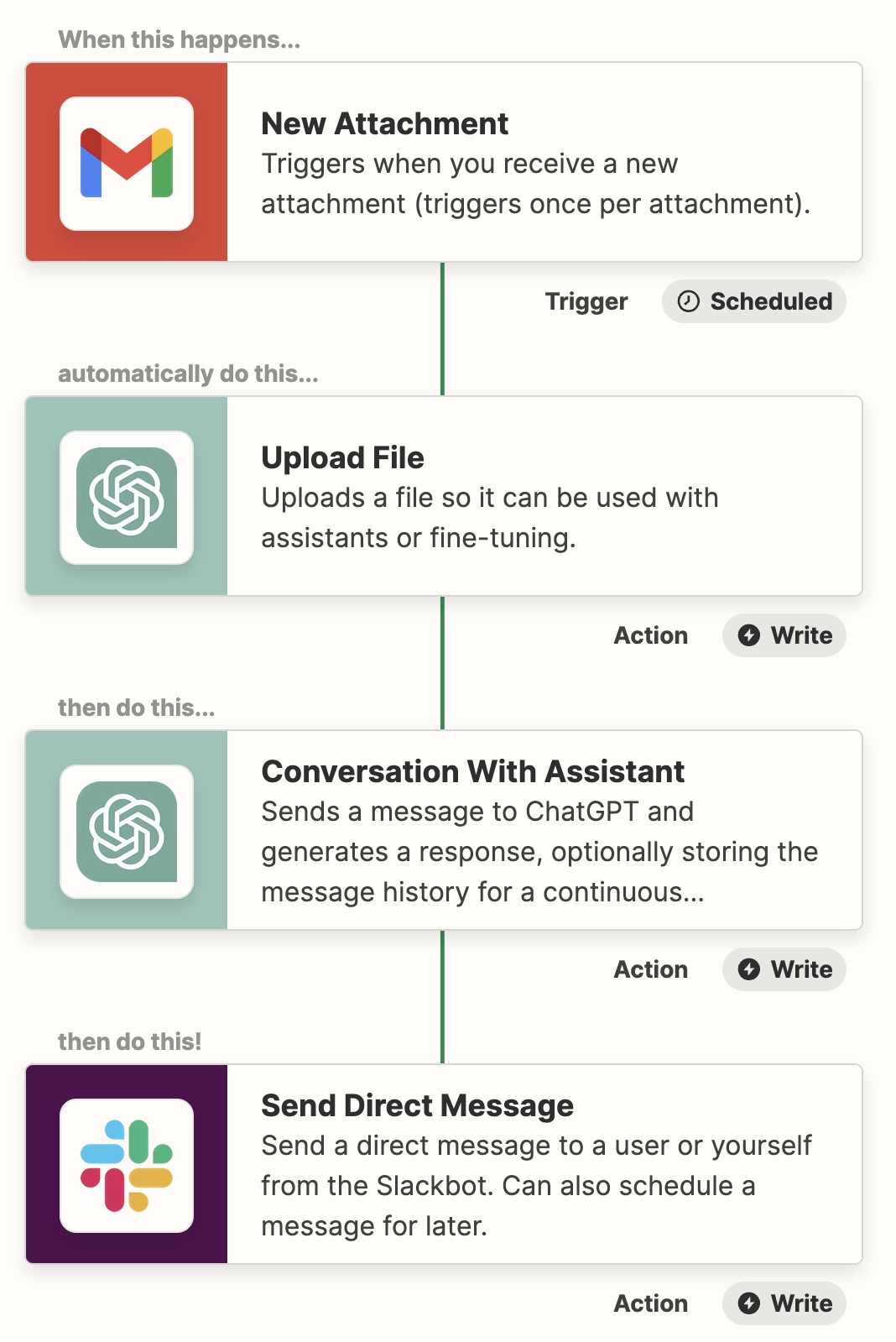 Screenshot from Zapier, December 2023
Screenshot from Zapier, December 2023Actions For GPTs
Remember the custom AI chatbots mentioned earlier that ChatGPT subscribers can build with minimal coding?
If you’re willing to do a small amount of coding, Zapier also offers actions that connect GPTs to Zapier’s platform of app integrations.
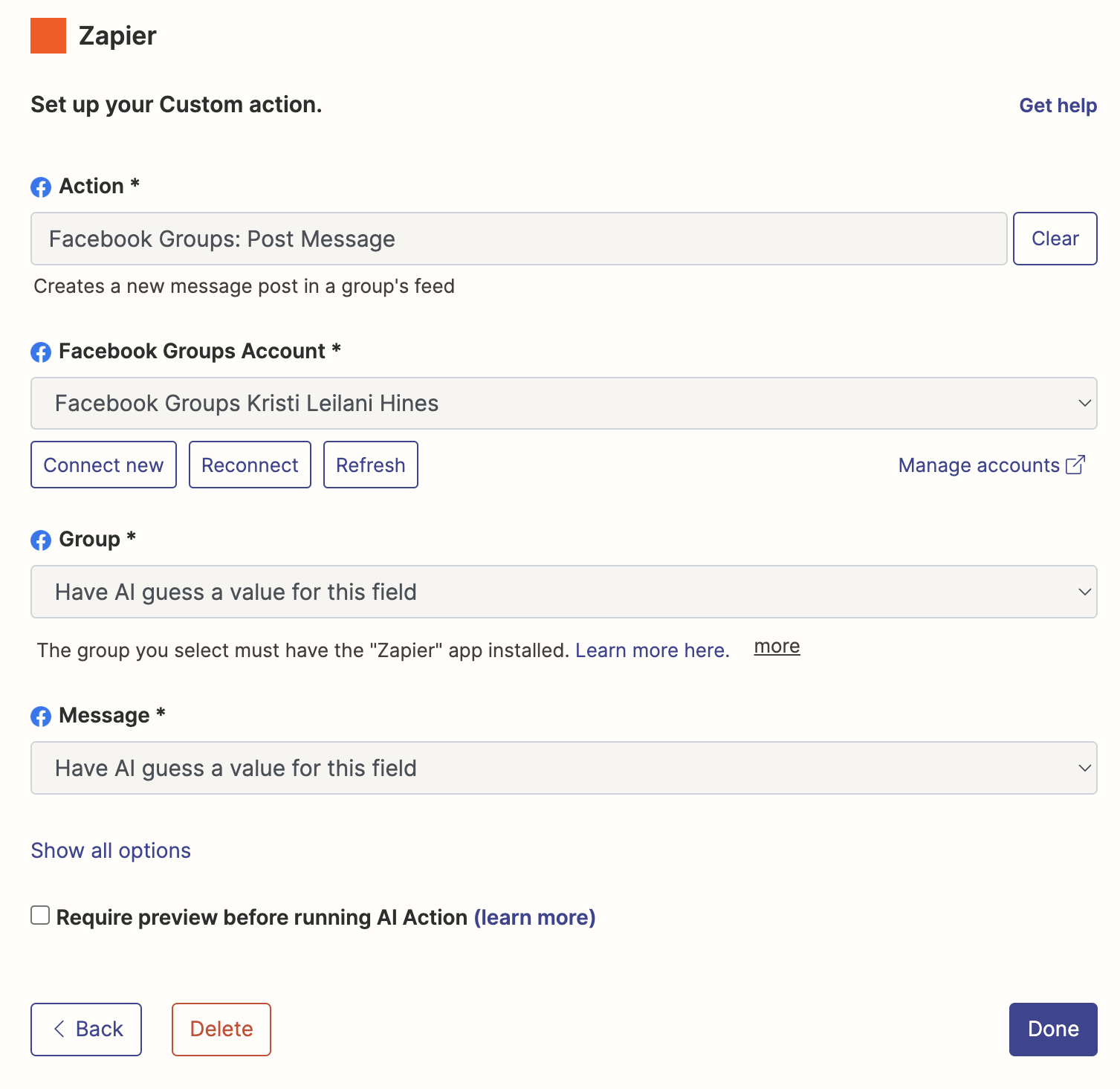 Screenshot from Zapier, December 2023
Screenshot from Zapier, December 2023This would allow you to create a GPT that discusses your plans for the day, sends your schedule to Google Calendar, or adds to-do list items as new tasks in Asana.
Again, when using the features – especially in a professional setting – confirm if it is acceptable to use AI with business applications like Google Drive, Microsoft 365, Slack, and those that have access to sensitive company or client data.
Train AI Models And Build Generative AI Applications
If none of the AI chatbots and tools mentioned thus far provide the customized level of solution you need, then you should work with the following for enterprise AI solutions.
- Build with the latest AI models using Anthropic, Cohere, OpenAI, and Perplexity APIs.
- Build AI applications and train your AI models with Amazon, Google, IBM, Microsoft, NVIDIA, Oracle, and Salesforce.
- Build with open-source models from Hugging Face, Meta, and Mistral AI.
According to 2,205 survey respondents in the U.S., the most-wanted AI-powered products include online search, shopping recommendations, books, movies, news articles, ads, sales outreach, and social media captions.
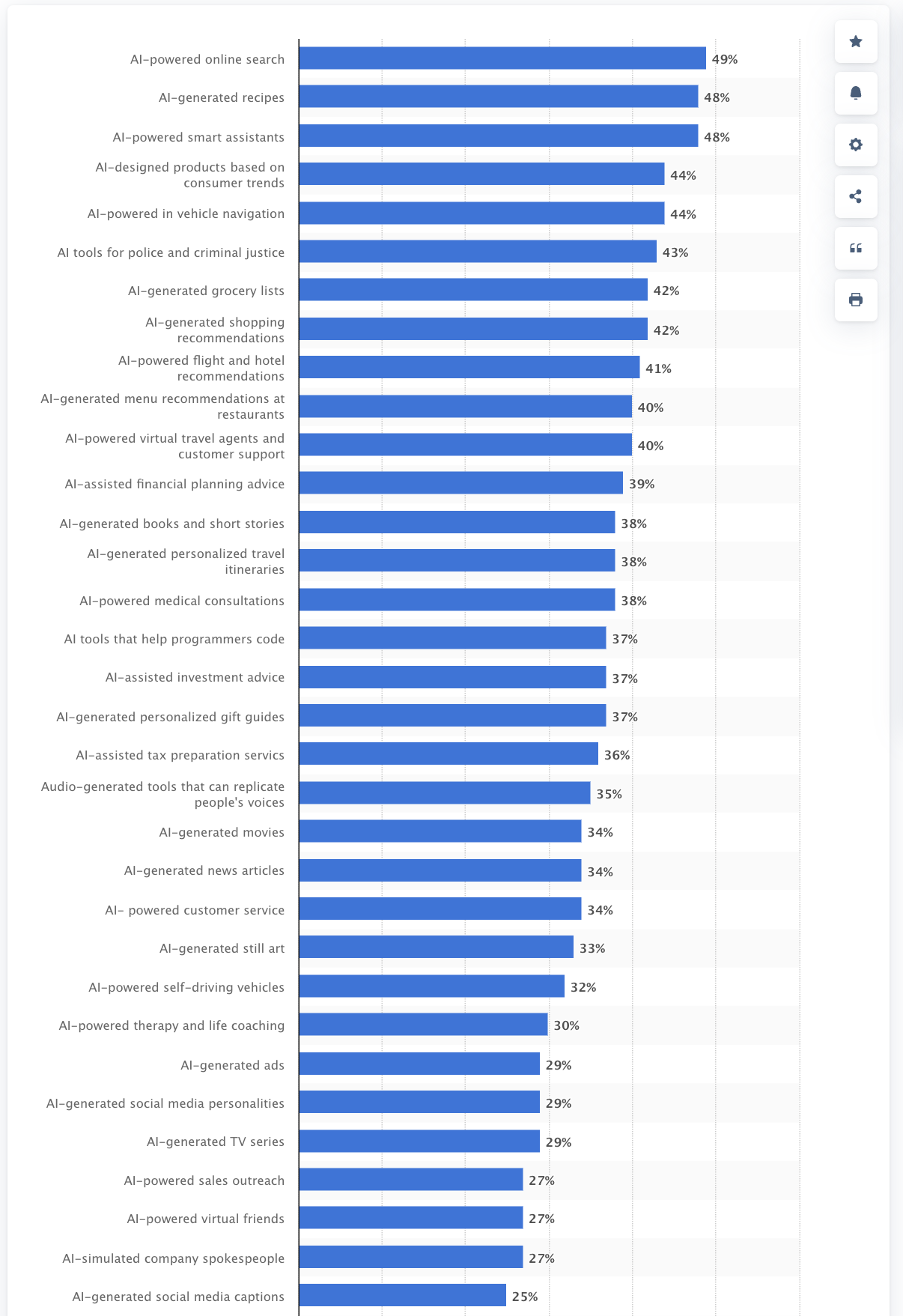 Screenshot from Statista, December 2023
Screenshot from Statista, December 2023Learn How To Develop AI Solutions
Learn how to build AI products with the following courses and learning paths:
- Generative AI Learning Plan for Developers (Amazon).
- Machine Learning Engineer Learning Path (Google).
- Develop Generative AI solutions with Azure OpenAI Service (Microsoft).
- Microsoft Azure AI Fundamentals (Microsoft).
Conclusion
The key in 2024 is not just to utilize AI efficiently but responsibly and safely.
Always be aware of the benefits and potential risks for yourself, your company, and your customers.
More resources:
Featured Image: Besjunior/Shutterstock
